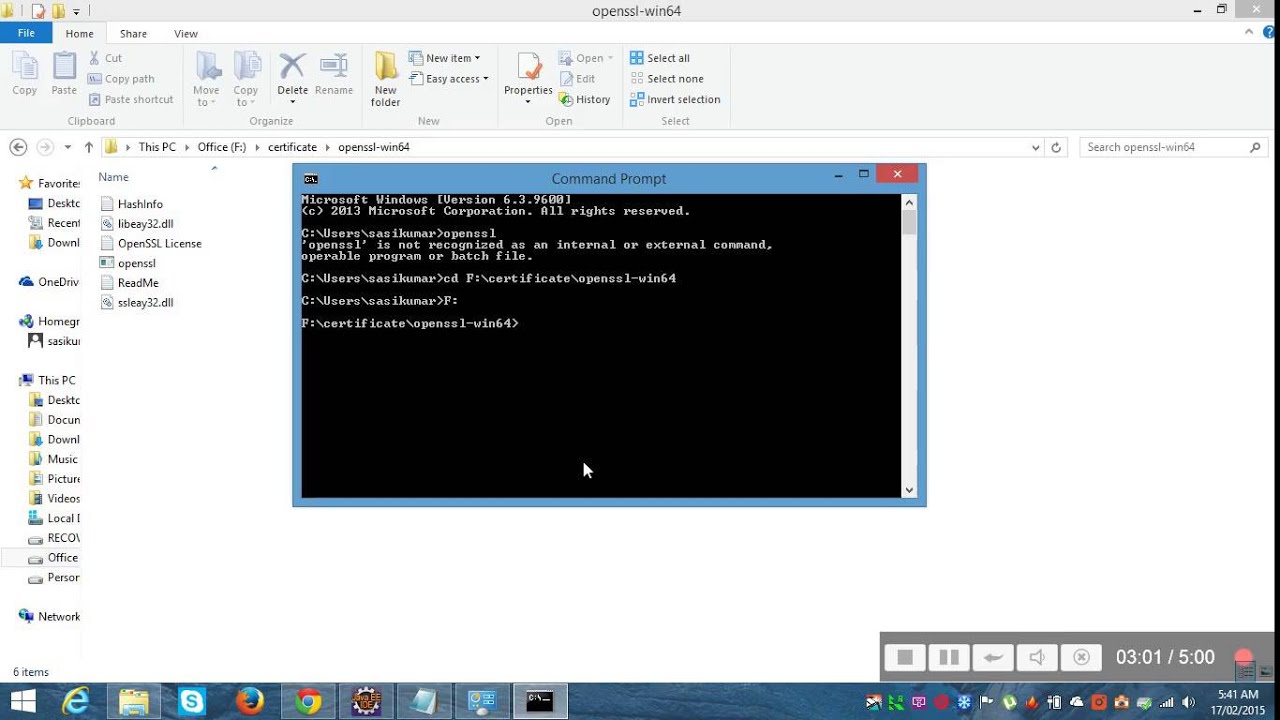

- #Openssl command software#
- #Openssl command code#
- #Openssl command password#
- #Openssl command series#
openssl req -new \-newkey rsa:2048 -nodes -keyout yourdomain.key \-out yourdomain.csr \-subj "/C=US/ST=Utah/L=Lehi/O=Your Company, Inc./OU=IT/CN=" Verifying the Contents of your CSR with OpenSSL commands If you copy-paste this command directly you’re not going to get a certificate. Just remember to saw the placeholder information with your information. If you want to generate a private key and a CSR simultaneously then you can use the following command. Creating your CSR with a single OpenSSL command An optional company name – Skip this, press enter.
#Openssl command password#
A challenge password – Skip this, press enter.Email Address – Enter your email address.Common Name – Enter your Fully-Qualified Domain Name.Organization Unit – What department are you forced to do team-building with?.Organization Name – Enter the name of your company.State or Province (full name) – Enter your State/Province.
#Openssl command code#
#Openssl command series#
The server will respond by asking you a series of questions. To begin, use this: openssl req -new -key yourdomain.key -out yourdomain.csr Now that your private key is ready, it’s time to get to your Certificate Signing Request. Ok, ok, the Private Key file contains the Public Key too, if you ever need to extract it, use this: openssl rsa -in yourdomain.key -pubout -out yourdomain_public.key Creating your CSR with OpenSSL (Finally) Your private key is actually what spawns your public key in a scientific process called budding. To decode the private key, use this: openssl rsa -text -in yourdomain.key -noout Extracting your Public Key using OpenSSL To view the raw, encoded contents of the key, use this: cat yourdomain.key To generate a 2048-bit RSA key, use this: openssl genrsa -out yourdomain.key 2048 Now that you’ve decided, let’s get to the command lines.

And even if you already know, sometimes it’s nice just to ask the server a few questions about itself before you start bossing it around. Sometimes you’ll need to identify which version of OpenSSL is being used on a given server. So say goodbye to the Pythagorean theorem and say hello to… this. That’s right, today we’re going to forget some relevant information so we can make space in our brains for some random strings of text that a computer will understand.

So that means we need to learn some command lines. And Google hasn’t pulled a wet job since it whacked Jeeves. Now, I know what you’re asking: “can’t I just generate a private key and a CSR in my browser with an online tool?” No. About two-thirds of all web servers are using OpenSSL. It’s written in the programming language, C, though there are wrappers available for a wide range of computer languages.

It includes tools for generating Certificate Signing Requests and Private Keys. It’s a robust, full-featured toolkit for the open-source implementation of the SSL and TLS protocols.
#Openssl command software#
OpenSSL is a software library, a cryptography library to be exact. Today, we’re here to discuss OpenSSL command lines. But that’s another discussion for another time. Millenials are the worst thing to ever happen to Applebee’s. Probably one that can’t attract millennial customers. Writing a comprehensive guide to OpenSSL commands seems an odd job to give an aging man who, up until recently, thought servers could only be found hoofing it from kitchen to table in a chain restaurant.


 0 kommentar(er)
0 kommentar(er)
